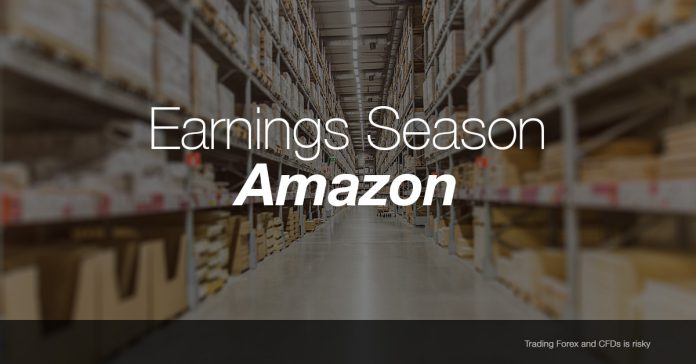Amazon’s earnings report is due to come out on January 31, and the world’s largest company by market capitalization (an honour which belonged to Apple in all but two quarters since 2011), is expected to experience a near-tripling of its Earnings Per Share (EPS), compared to last year.
Amazon’s revenue stream is impressive: more than half of US homes have a Prime membership, while cloud and e-commerce businesses are growing. The stronger-than-expected holiday sales, with online sales up 19.1% since last year, should also assist in holding profits high. The introduction of Amazon Go, which is likely to revolutionize the retail shopping experience, is also expected to provide additional sources of income for the company, even though they are not expected to materially change the sales mix, as physical sales account for about 2.5% of total sales.
Despite the fact that Amazon posted a $2.9 billion profit in the third quarter of the year (that’s almost one billion per month), its share price declined as a result of worse than expected revenue. North America remains Amazon’s main source of earnings, as the company still operates at a loss in the international market, even though this appears to be declining as net sales increase. Fortunately for the company, Amazon Web Services (AWS), which provides cloud-computing services, posted a significant increase in both sales and operating income, with operating margin increasing to 28.1% in the nine months to September, compared to 24.1% for the same period in 2017.
The big question regarding Amazon sales is how these would will have been affected by the on-going US trade war over the last quarter of 2018, and how this impact, along with the expected US economic slowdown in 2019, are expected to play out this year. For 2018, it is unlikely that Amazon would have faced severe disruptions, as 90% of its sales income in 2017 came from the US, Germany, the UK, and Japan.
The US-Sino trade war and the subsequent slowdown in China could affect the company indirectly though, through price increases and a reduction in product availability. Nonetheless, so long as transactions remain high, it could be the case that the company emerges unscathed from this.
On the other hand, the US economic slowdown, expected in 2019, could have a stronger impact on Amazon sales, as the country accounts for 67% of total revenue. Despite the ongoing growth of the company, a worsening in the economic environment could withhold sales growth, especially if coupled with market saturation. While the effect would be there, the fact that sales in North America grew by 35% in the first nine months of 2018 could suggest that there is still room for growth, and while the slowdown would definitely have an impact this is not likely to appear until later this year. Furthermore, Amazon boasts the highest number of subscribers among all other US firms, which implies that consumers are more likely to increase their spending on the Amazon website than on others. Even if the number of subscribers has reached its peak, all that Amazon requires is higher spending on its website.
The game-changers for Amazon in the coming year will be the international, physical and AWS segments as all three still have much growth potential, some of which could be seen in 2019. Furthermore, once international sales increase to the break-even point, something which is also likely to take place in 2019, Amazon will also pose a more stable and much more reliable earnings stream. Cloud subscriptions, the major part of AWS, are also set to continue their expansion over time, with other companies, such as SAP, also recording double-digit cloud growth for the year. The same holds for Amazon Go, whose locations are reported to increase to 3,000 brick and mortar stores by 2021, targeting urban metros with young professionals.
While Amazon appears to have a large potential for growth in the coming years, the question which begs an answer is whether, at its current valuation of 100 times earnings, the company is overvalued or not, especially compared to the internet services industry average of 29. As such, the question which really bothers investors is whether Amazon is essentially able to at least triple its earnings over the coming years in order justify the premium. Naturally, this question is up for any interpretation at the moment, while the earnings report will be paramount in gauging the potential for future growth.
Click here to access the Economic Calendar
Dr Nektarios Michail
Market Analyst
Disclaimer: This material is provided as a general marketing communication for information purposes only and does not constitute an independent investment research. Nothing in this communication contains, or should be considered as containing, an investment advice or an investment recommendation or a solicitation for the purpose of buying or selling of any financial instrument. All information provided is gathered from reputable sources and any information containing an indication of past performance is not a guarantee or reliable indicator of future performance. Users acknowledge that any investment in FX and CFDs products is characterized by a certain degree of uncertainty and that any investment of this nature involves a high level of risk for which the users are solely responsible and liable. We assume no liability for any loss arising from any investment made based on the information provided in this communication. This communication must not be reproduced or further distributed without our prior written permission.



















